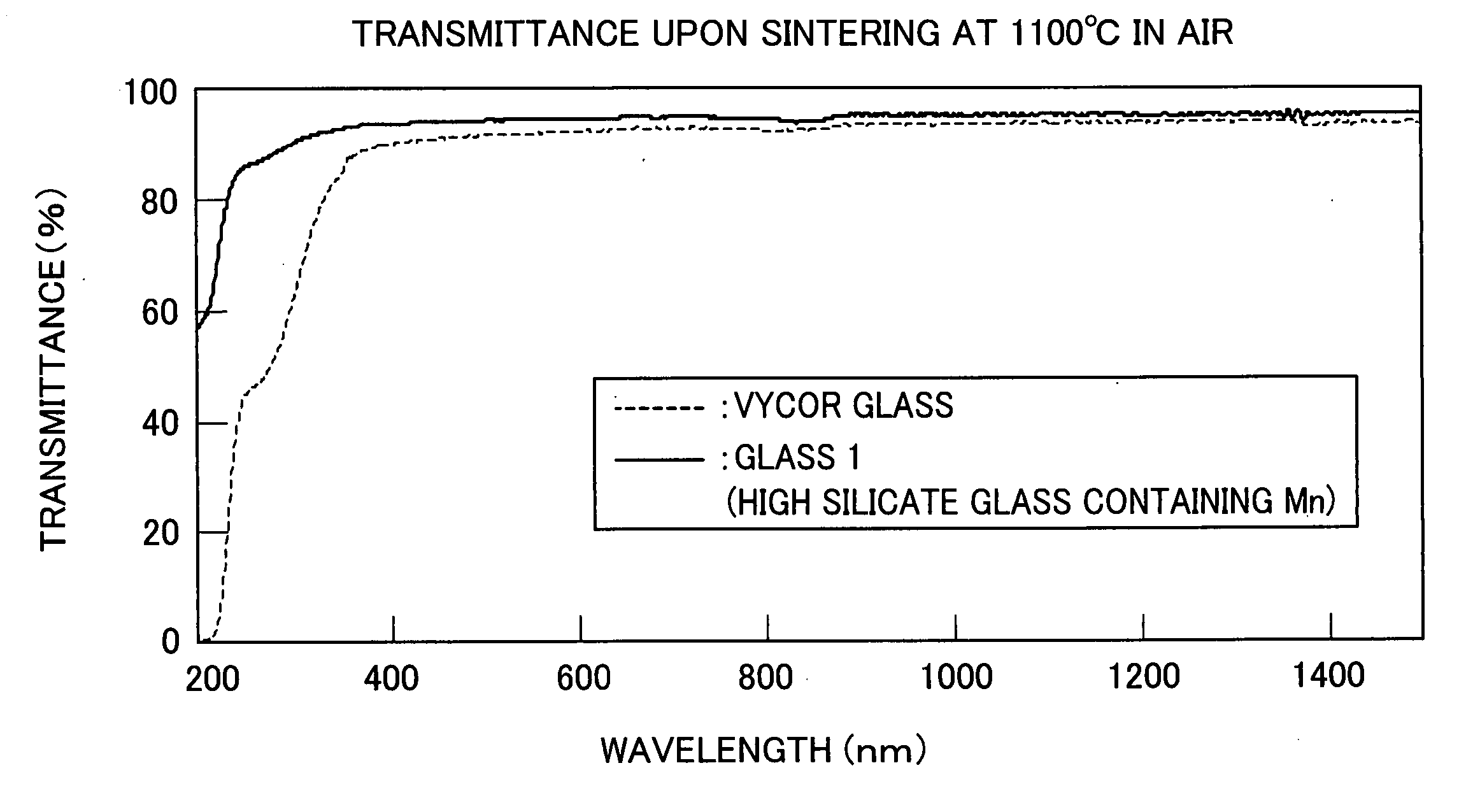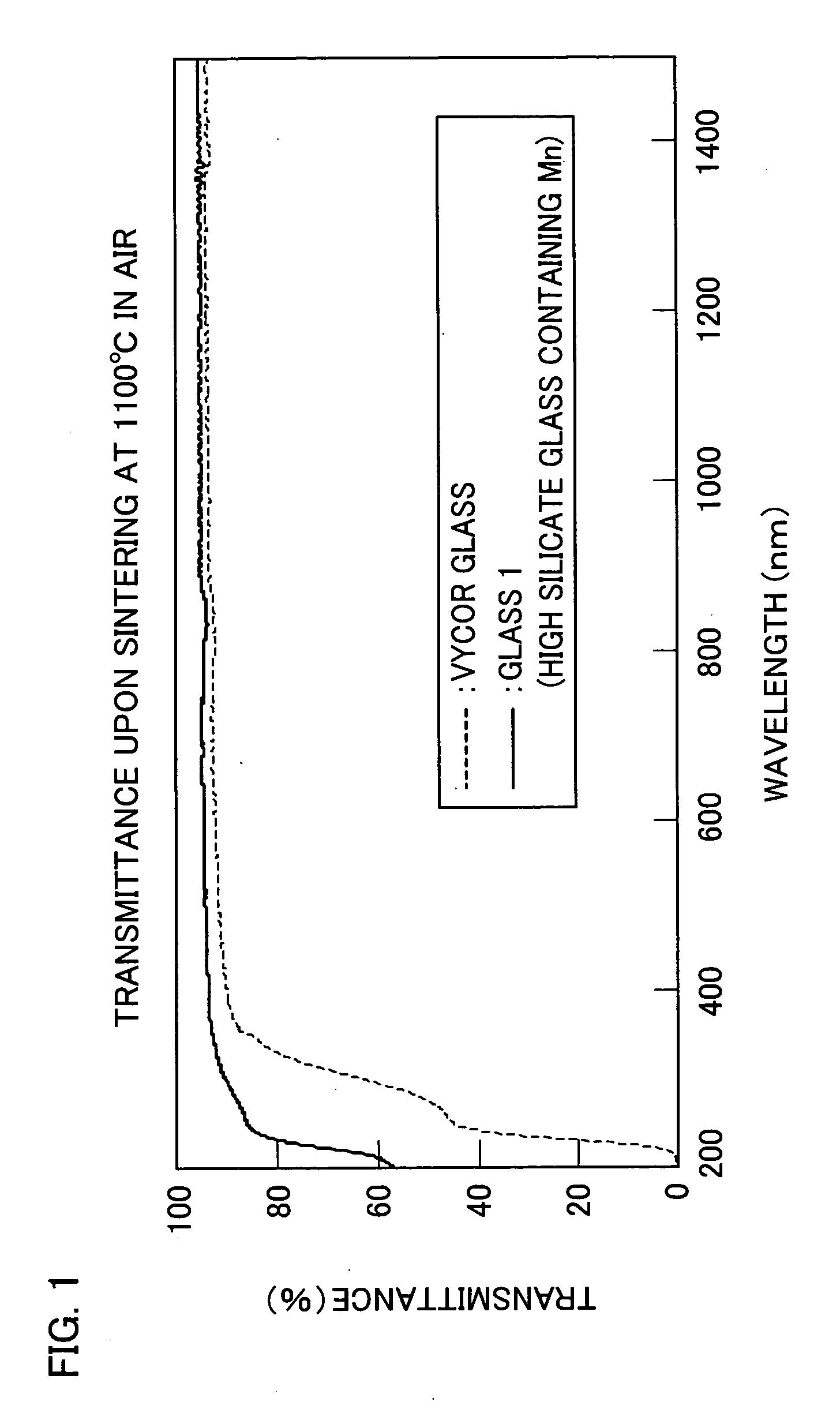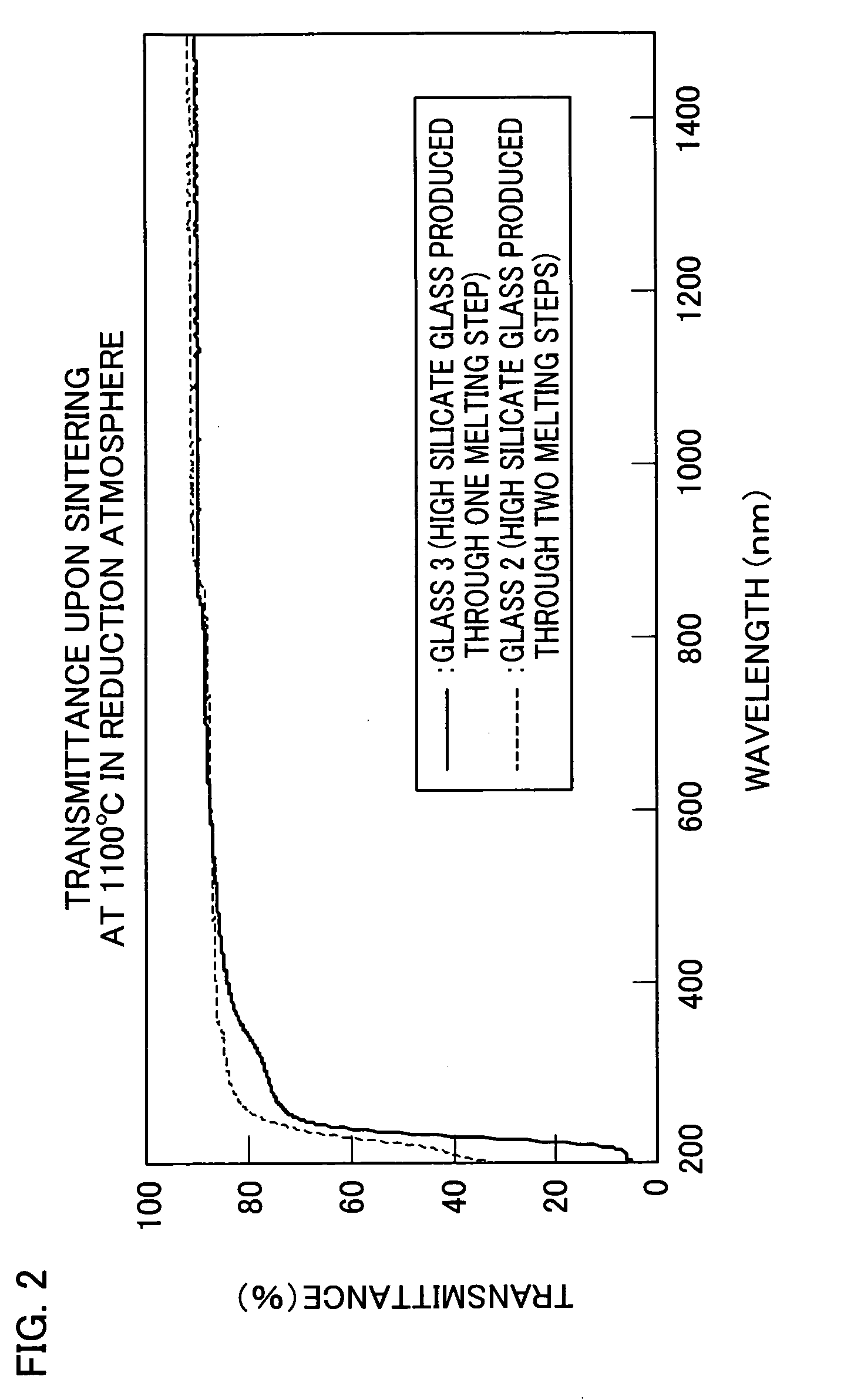Process for producing high silicate glass and high silicate glass
a technology of high silicate glass and high silicate glass, which is applied in glass tempering equipment, glass making equipment, manufacturing tools, etc., can solve the problems of high cost and difficulty of upsizing, the melting process has the drawback of requiring a very high temperature, and the uv and ir transmittance cannot be sufficiently increased, so as to achieve high silicate, low cost, and high silicate
- Summary
- Abstract
- Description
- Claims
- Application Information
AI Technical Summary
Benefits of technology
Problems solved by technology
Method used
Image
Examples
example 1
[0061] In Example 1, glass was obtained in the following manner. Commercially available reagents (Na2CO3, H3BO3, SiO2, Al(OH)3, CaCO3, and MnO2) were weighed and mixed so as to achieve a glass composition having Na2O: 7.7 (wt %), CaO: 4.0 (wt %), Al2O3: 2.7 (wt %), MnO2: 0.7 (wt %), B2O3: 33.3 (wt %), and SiO2: 51.7 (wt %). The mixture was melted for four hours at 1400° C. by using a platinum crucible.
[0062] The thus obtained glass was polished, was heated for 40 hours at 590° C. in a heat-treating furnace, and was subjected to phase separation. Thereafter, the phase-separated glass was contained together with 1N nitric acid into an airtight container and was subjected to acid treatment for 24 to 72 hours at 90° C. The acid-treated glass was further sintered for two hours at 1100° C. in the air, thereby producing high silicate glass (hereinafter referred to as “Glass 1”). Measurement was conducted on a transmittance of Glass 1 with a thickness of 1.0 mm.
[0063] As a comparative exa...
example 2
[0066] In Example 2, glass was obtained in the following manner. Commercially available reagents (Na2CO3, H3BO3, SiO2, Al(OH)3, and CaCO3) were weighed and mixed so as to achieve a glass composition of SiO2: 77.5 (wt %), Na2O: 11.5 (wt %), CaO: 6.0 (wt %), and Al2O3: 5.0 (wt %). In a first melting step, the mixture was melted for four hours at 1500° C. by using a platinum crucible. Thereafter, in a second melting step, H3BO3 was added to the mixture so as to achieve a glass composition having 50 parts by weight of H3BO3 per 100 parts by weight of the glass obtained after melting. Then, the mixture was subjected to second melting at 1400° C.
[0067] The thus obtained glass was polished, was heated for 40 hours at 590° C. in a heat-treating furnace, and was subjected to phase-separation. The phase-separated glass was contained together with 1N nitric acid into an airtight container and was subjected to acid treatment for 24 to 72 hours at 90° C. The acid-treated glass was further sinte...
example 3
[0071] In Example 3, glass was obtained in the following manner. Commercially available reagents (Na2CO3, H3BO3, SiO2, Al(OH)3, CaCO3, and CeO2) were weighed and mixed so as to achieve a glass composition of SiO2: 77.5 (wt %), Na2O: 11.5 (wt %), CaO: 6.0 (wt %), Al2O3: 4.0 (wt %), and CeO2: 1.0 (wt %). In a first melting step, the mixture was melted for four hours at 1500° C. by using a platinum crucible. In a second melting step, H3BO3 was added to the mixture so as to achieve a glass composition having parts by weight of H3BO3 per 100 parts by weight of the glass obtained after melting. Then, the mixture was subjected to second melting at 1400° C.
[0072] The thus obtained glass was polished, was heated for 40 hours at 590° C. in a heat-treating furnace, and was subjected to phase-separation. The phase-separated glass was contained together with 1N nitric acid into an airtight container and was subjected to acid treatment for 24 to 72 hours at 90° C., thereby obtaining porous glass...
PUM
| Property | Measurement | Unit |
|---|---|---|
| thickness | aaaaa | aaaaa |
| thickness | aaaaa | aaaaa |
| temperature | aaaaa | aaaaa |
Abstract
Description
Claims
Application Information
 Login to View More
Login to View More - R&D
- Intellectual Property
- Life Sciences
- Materials
- Tech Scout
- Unparalleled Data Quality
- Higher Quality Content
- 60% Fewer Hallucinations
Browse by: Latest US Patents, China's latest patents, Technical Efficacy Thesaurus, Application Domain, Technology Topic, Popular Technical Reports.
© 2025 PatSnap. All rights reserved.Legal|Privacy policy|Modern Slavery Act Transparency Statement|Sitemap|About US| Contact US: help@patsnap.com



